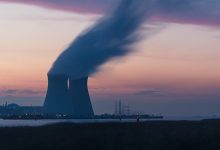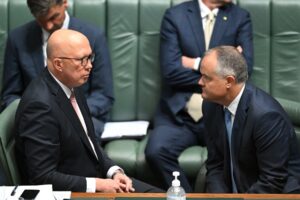As predictable as the sun rising in the east, or the Nationals having a leadership spill, Australia is once again facing a campaign from nuclear advocates to start a nuclear energy industry on our shores.
This is a rabbit hole we have been down before and the basic facts haven’t changed – nuclear energy remains too expensive, too slow to build, and makes no sense for Australia.
It makes no sense economically and it makes no sense because we have better, cheaper and more viable energy alternatives right now.
We should be pursuing the much cheaper alternative of firmed renewables that will reduce power bills for Australian households and businesses while also reducing Australia’s emissions.
Nuclear is another distraction obstructing us from realising our real need – affordable, clean and reliable energy.
Now, I am not opposed to nuclear technology. Before the pandemic, I had the opportunity to visit the open water nuclear reactor in Australia’s Nuclear Science and Technology Organisation (ANSTO) in Lucas Heights, Sydney.
In the depths of the cooled water lies an astonishing piece of technology that helps create chemical compounds that are essential for the detection and treatment of cancers and other diseases.
Dressed in protective gear, including a radiation monitor, I was genuinely impressed with the scale and the engineering that has gone into Australia’s only nuclear reactor.
Walking out of the main observation floor, ANSTO’s engineers and I discussed the difference between Australia’s open water reactor and what would be needed if we were to use nuclear fission technology to build reactors that could be used to generate energy.
In short, a nuclear energy reactor would need to be much bigger than our comparatively small open water reactor. It would require a level of expertise not currently present in Australia. It would require the use of lots more water and it would require a plan to deal with significantly more low, mid and high-level radioactive waste.
I tell this story to reiterate that I am not against the technology, in fact I am in awe of the scientific and engineering expertise required to manage a nuclear reactor and the potential of nuclear technology.
But let’s get back to the nation – Australia needs to generate reliable, low-emission energy as cheaply as possible. And cost is a major hurdle that nuclear energy cannot get over.
The cost of creating energy from a nuclear reactor is by far the most expensive technology option for Australia. Official estimates by the Australian Energy Market Operator (AEMO) show that the cost of nuclear energy creation is $16,000 per kilowatt.
It is so expensive that it would be cheaper to build two coal-fired power stations and not use one of them. AEMO does state that the cost of Small Modular Reactors (SMR) may bring down the cost of nuclear generation in the 2030s, but it is too early to tell at this stage.
Indeed, the problem with SMRs is they don’t exist yet. There are no examples of reactors being produced, at scale, in factories to be then shipped to different locations for use as commercial energy generators.
There are examples of prototypes being produced, but none are in operation yet. So any claims that SMRs are making nuclear energy cheaper must be called out for what they are – purely hypothetical.
SMRs may, one day, bring down the cost of nuclear technology but they haven’t yet and we can’t bank on a hypothetical.
Nuclear’s other big hurdle here is timing. Absolutely, it is a low emissions technology – but the time it would take to build a nuclear reactor in Australia makes it uncompetitive.
According to the International Atomic Energy Agency, the median construction time alone for nuclear reactors was almost eight years, and this doesn’t even include the planning or approval stages for the build.
Given Australia does not have the required expertise or experience in building, managing and operating a nuclear energy reactor, we would likely need to factor in additional time. So even the most optimistic assumptions would mean we are at least a decade away from having just one nuclear reactor generating energy for Australia.
This clearly does not meet our emission reduction needs – we need to dramatically reduce our reliance on fossil fuels over the next decade, and the window has closed for nuclear to be a vehicle to achieve this.
It would be one thing to pursue nuclear if we had no other alternatives, but we have some of the most plentiful solar, wind and offshore wind resources in the world, still largely untapped. Firmed renewables like wind and solar, backed up by storage like hydro and batteries are much, much cheaper.
According to AEMO, the rate of renewables entering the grid will mean that we will hit 90% renewables by the early 2040s. The truth is we could get there faster and that is what our focus must be.
To quickly deliver the cheap, reliable, low emission energy our country needs, we need to look to renewables, not nuclear. Reducing emissions is a race, it’s time we caught up.
Josh Burns is the Labor MP for the federal seat of Macnamara, and a member of the House of Representatives Standing committee on Environment and Energy.









